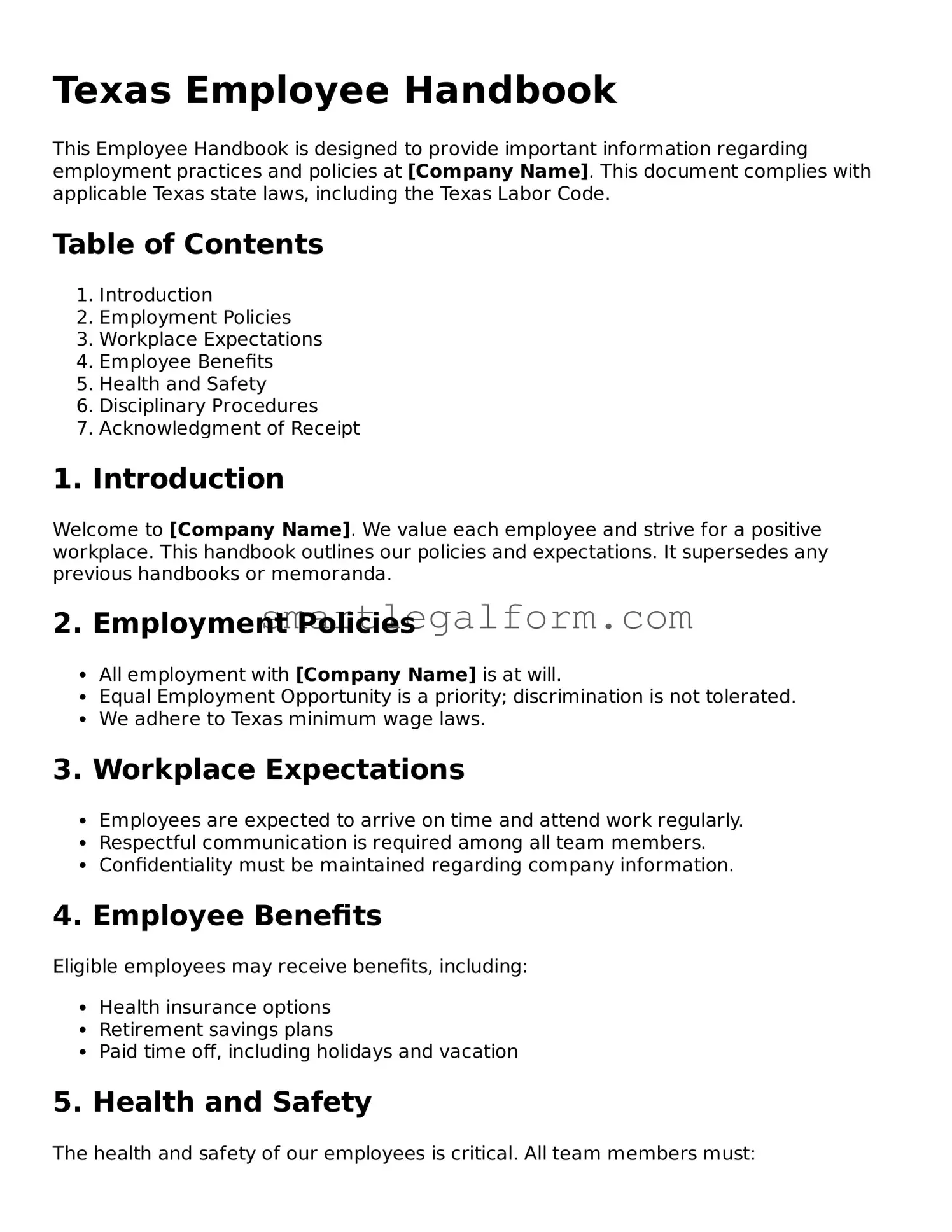Texas Employee Handbook
This Employee Handbook is designed to provide important information regarding employment practices and policies at [Company Name]. This document complies with applicable Texas state laws, including the Texas Labor Code.
Table of Contents
- Introduction
- Employment Policies
- Workplace Expectations
- Employee Benefits
- Health and Safety
- Disciplinary Procedures
- Acknowledgment of Receipt
1. Introduction
Welcome to [Company Name]. We value each employee and strive for a positive workplace. This handbook outlines our policies and expectations. It supersedes any previous handbooks or memoranda.
2. Employment Policies
- All employment with [Company Name] is at will.
- Equal Employment Opportunity is a priority; discrimination is not tolerated.
- We adhere to Texas minimum wage laws.
3. Workplace Expectations
- Employees are expected to arrive on time and attend work regularly.
- Respectful communication is required among all team members.
- Confidentiality must be maintained regarding company information.
4. Employee Benefits
Eligible employees may receive benefits, including:
- Health insurance options
- Retirement savings plans
- Paid time off, including holidays and vacation
5. Health and Safety
The health and safety of our employees is critical. All team members must:
- Report workplace hazards immediately.
- Follow all safety protocols.
- Participate in safety training programs.
6. Disciplinary Procedures
We maintain the right to discipline employees for violations, which may include:
- Verbal warnings
- Written warnings
- Termination of employment for serious breaches
7. Acknowledgment of Receipt
Employee acknowledgment is required for compliance. Please sign below:
______________________________ [Employee Name]
______________________________ [Date]
